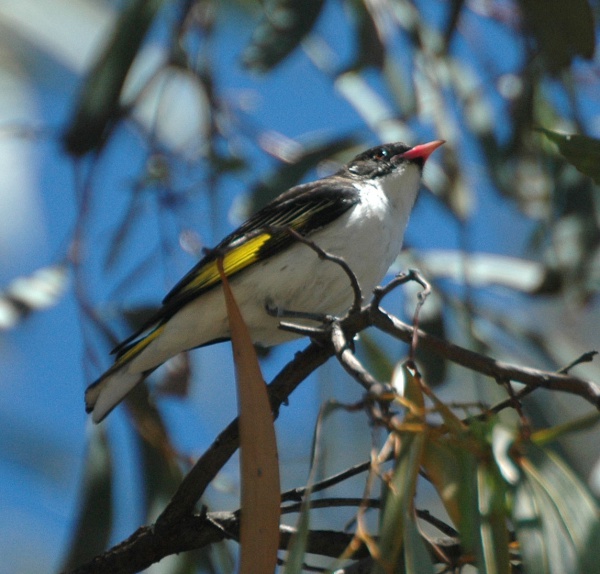Facts About Painted honeyeater
The Painted Honeyeater, an enchanting bird native to Australia, belongs to the Meliphagidae family and stands out as the sole species in its genus, Grantiella. Originally described by Gould in 1838 as Entomophila picta, it received its current name, Grantiella picta, from Mathews in 1911. The genus name honors Robert Grant, a taxidermist, while "picta" emphasizes the bird's striking yellow feather markings. Recent DNA studies position Grantiella within the fourth clade of Meliphagidae, closely related to Plectorhyncha and Xanthotis.
These small birds are easily identifiable by their distinctive black and white patterns, yellow wing feathers, and pink bills. Males and females exhibit slight differences in appearance, with juveniles showcasing a somewhat paler plumage. Their primary habitat is the woodlands of inland southeastern Australia, particularly in regions abundant with Eucalyptus and Acacia trees. Painted Honeyeaters are known for their nomadic and elusive nature, typically observed alone or in pairs.
Their breeding season is closely linked to the availability of mistletoe berries, especially those from the Amyema species. They construct neat, cup-shaped nests from fine grasses and spider webs, which they place in tree foliage. Typically, a clutch consists of two pale pink eggs adorned with red-brown spots. As frugivores, Painted Honeyeaters rely heavily on mistletoe berries but also consume nectar and insects.
Unfortunately, habitat loss due to land clearing and fragmentation poses a significant threat to the Painted Honeyeater. It is listed as vulnerable in several Australian states and territories. Conservation efforts are essential and involve managing mistletoe populations, as these berries are crucial for the birds' survival. Protecting mistletoe-rich habitats benefits not only the Painted Honeyeaters but also other endangered species. Conservation strategies focus on preserving vital habitat remnants and ensuring the sustainability of mistletoe populations to support the species' long-term survival.
